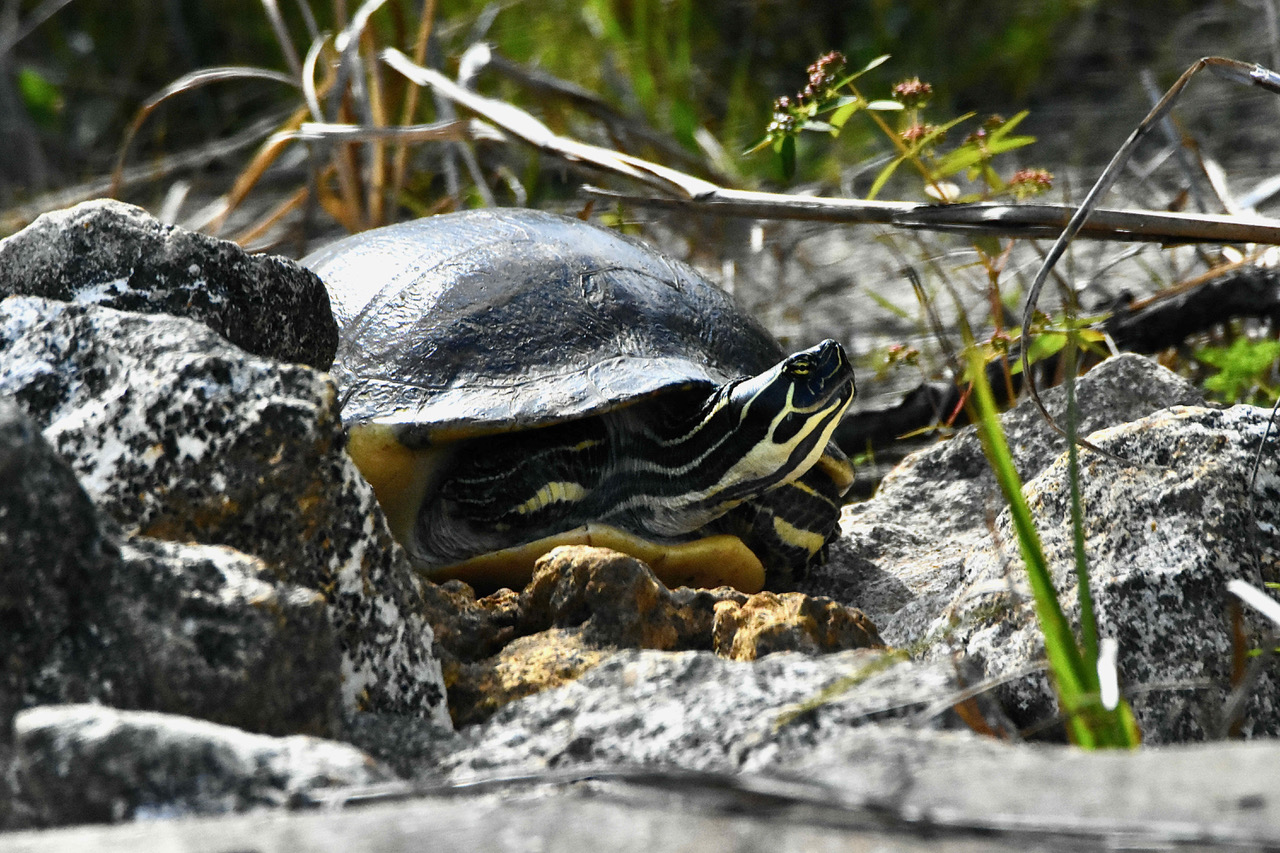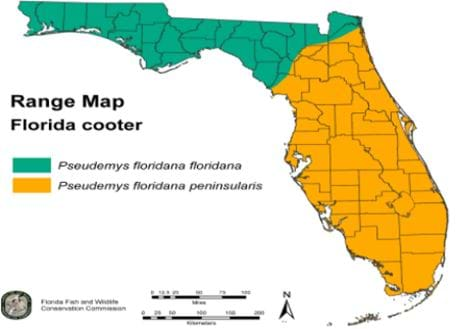
Peninsula cooter, photographed at Cypress Creek South Natural Area, Jupiter, Palm Beach County, in March 2018.
Of the nearly four dozen species of turtles that can be found in the Sunshine State, the peninsula cooter, aka Pseudemys floridana peninsularis is among the most common and easily spotted.
Its range extends through the Florida Peninsula, into Georgia and northward along the Atlantic Coastal Plain. There’s also a subspecies, P f floridana, found in extreme northern Florida and the Panhandle.
There are three other cooter species found in the state, the Florida red-bellied turtle, P nelsoni, the river cooter, P concinna concinna, found only in the extreme western section of the Panhandle, and the Suwannee cooter, P suwanniensis, with a range that stretches from central Florida into the Panhandle. It is state-listed as imperiled.
It is against Florida law to take any of the cooter species or their eggs regardless of their status.
The peninsula cooter, like its cousins, tends to bask a lot, on rocks, on logs, even the thick roots of spatterdock. It’s this habit that makes it easy to spot, though identifying it isn’t always easy. Swamps are a favorite habitat, but peninsular cooters will take to almost any freshwater body where the water is either slow-moving or stagnant.
Other key elements of peninsula cooter habitat include plenty of basking sites, plenty of aquatic vegetation — adults eat mostly aquatic plants — and sandy bottoms.
Like its cousins, the peninsula cooter is medium-sized as turtles go, with a carapace — the shell that covers the cooter’s back — usually between nine and 13 inches long, possibly reaching 16 inches. Females are larger than males.

The abdomen of the peninsular cooter is a plain yellow.
Males also have extremely long nails on their forelegs, which, oddly remind us of crazy-stage Howard Hughes. Males use these long nails, or claws, to entice females into mating by stroking their would-be partners' heads, which gets us humming a certain Roberta Flack song. We don’t have a good photo showing the difference between male and female claw in the peninsular cooter, but check out the bottom right photo of our page on the Florida red-bellied turtle to get some idea of what we’re talking about.
Females will leave the water to find a suitably dry site where they can dig a nest. They can lay as many as three clutches in a year, each with between 11 and 16 eggs. Like other turtles, temperature inside the nest determines the sex of the embryos, eggs in warmer spots develop as females, cooler spots, males. They’ll require on average 72 days of incubation before hatching. Mom provides no care for her young after depositing the eggs.
Juvenile peninsular cooters will dine on insects and small fish as well as plants, becoming less carnivore and more herbivore as they mature.
Male peninsular cooters will reach sexual maturity at three to four years old; females will reach sexual maturity at five to seven years old, but may delay their first nest until ten.
Peninsular cooters have a maximum lifespan of about 40 years, according to the Florida Fish and Wildlife Conservation Commission.
Cooters are somewhat social animals to the extent that they will share basking sites with other members of their species and with other kinds of turtles. However, they don’t have any kind of social structure otherwise.
The word “cooter” means river turtle and derives from kuta, the word for turtle in two African languages and brought to the United States through the slave trade.
The peninsular cooter is also known as the Florida cooter. They are members of Emydidae, a family of turtles that includes cooters, sliders and more.



